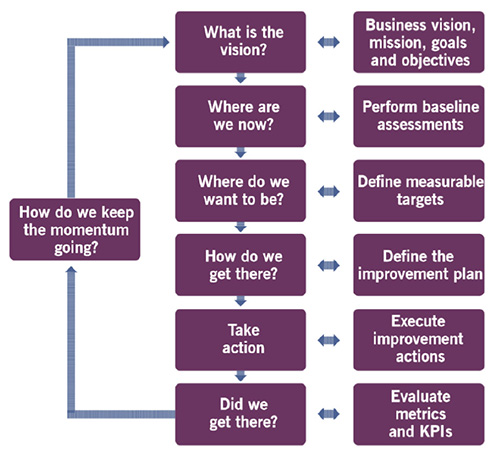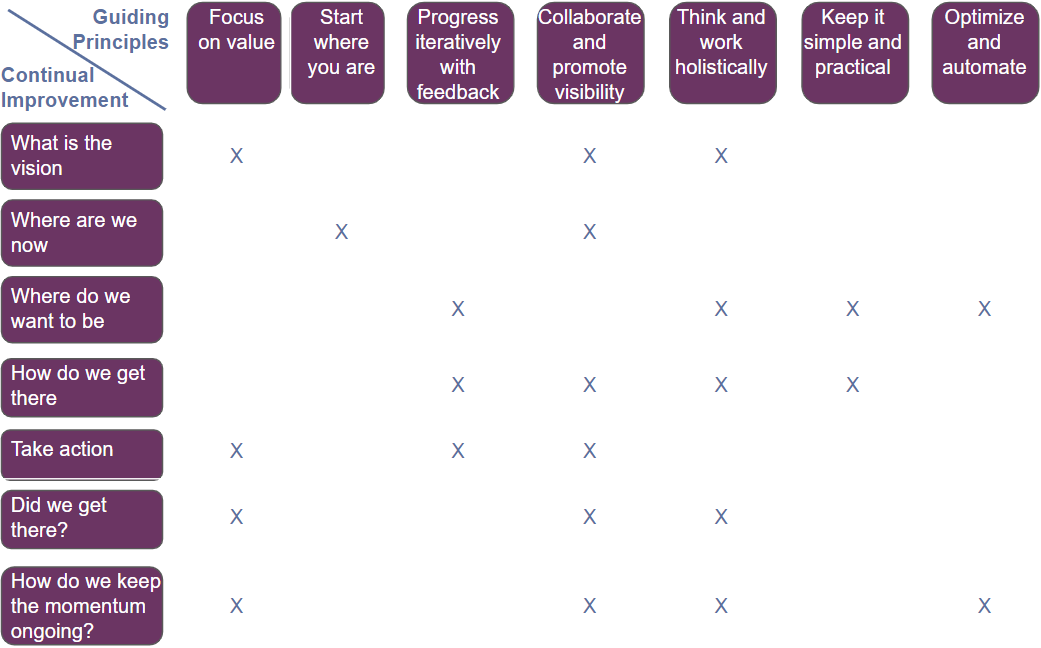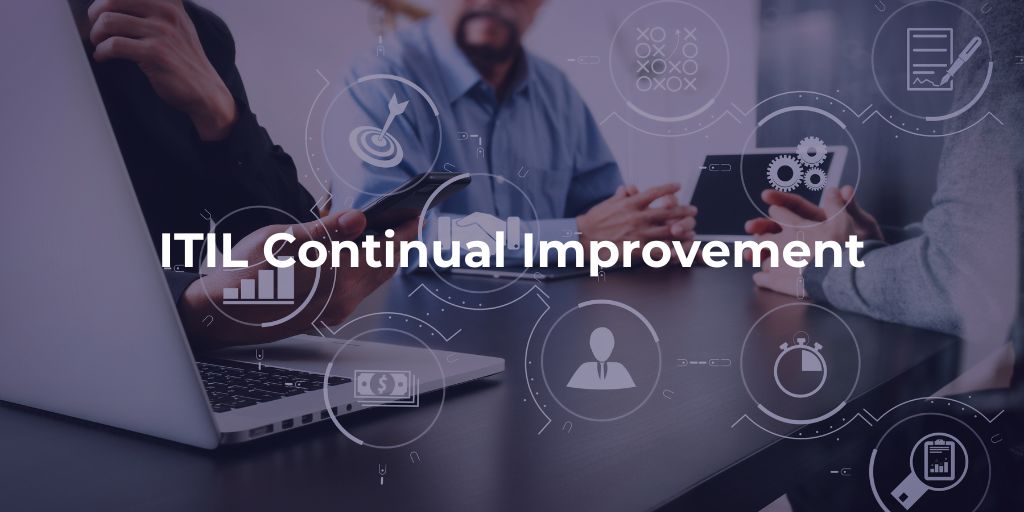The ITIL 4 Continual Improvement Model is what in ITIL v3 was called the ‘Continual Service Improvement’ (CSI). It is a recurring organisational activity performed to make sure that the organisation is aligned with stakeholders expectations. The Continual Improvement Model is part of the Service Value System (SVS).
Continual Improvement Model: Definition
The Continual Improvement Model provides simple and logical steps for an improvement initiative at any scale. It can be seen as a guide to help sustain improvement initiatives, from the very beginning to the end. The model has an iterative approach, which means it divides the work into manageable parts with set goals. Using the model increases the possibility that ITSM initiatives have a positive outcome. The Continual Improvement Model puts focus on customer value and makes sure that all improvement initiatives are linked to the organisation’s vision.
The model is applicable to very small initiatives like Service or Operation improvement, but also to organisational changes. The approach is always the same, the techniques can differ depending on the size of the initiative. The Continual Improvement Model is shown in the image below.

Continuous Improvement Model: Steps for the Application
Depending on the improvement that has been planned, the steps of the Improvement Model can vary significantly. It is important to follow all the steps for each improvement:
- What is the vision? The improvement should support the organisation’s goals and objectives at all times. It should also link individual actions to the future vision in order for them to be perceived as an improvement.
- Where are we now? In order for an improvement to really have an impact, it should have a clear starting point. The step ‘where are we now’ helps assessing the current situation, from a technical business standpoint, also considering human resources and user’s perception.
- Where do we want to be? This step helps visualise the Improvement initiative. It is the moment to set the Key Performance Indicators (KPI’s) and the objectives of the improvement initiative.
- How do we get there? The fourth step helps the planning. The Continual Improvement Model advises to work iteratively, however with some initiatives this might not be needed and another approach will suffice.
- Take action! Execute the plan that has been created in the previous step. A measurement process is key as it will help the Team stay on track. To execute the plan the Team can use the approach that fits their needs best (Waterfall, Big bang or Small iterations).
- Did we get there? Check and confirm the progress and the value of the improvement initiative. If the desired result has not been achieved, additional actions need to be taken (often in a new iteration).
- How do we keep the momentum going? If the initiative is a success, use it to build support and momentum for future initiatives. To do so, share the success both internally and externally. If the initiative has not been successful, make sure to understand why and use the information for the Project’s ‘lessons learned’. In this way the initiative can create value, even though it was not a success.
Continual Improvement Model: Tips
If the Continual Improvement Model is embedded in your way of working, it will help you stay aligned with and increase User Engagement. In this process make sure to look for the right initiative to take on, be proactive and stay organised!
Choose Well
There are always opportunities for improvement, especially in IT services and support. To understand what type of improvement initiative is needed, look at pain points: Improving the services associated with them will bring the biggest benefits.
Be Proactive
Proactivity will help maximise the results of the Continual Improvement Model. Continual Improvement does not focus only on fixing current pain points, it also focuses on being future-facing. Processes are not static and will change, if you are ahead of this change you will be in a more comfortable position.
Stay Organised
Create a register for all the improvements you are planning to make. This will help you prioritise and know what things to focus on next. A register for improvements can be very simple, a shared document with the improvement, timeframe and explanation will do!
Applying the 7 ITIL Guiding Principles to the Continual Improvement Model
The 7 ITIL guiding principles and the Continual Improvement Model are key in the ITIL Service Value System (SVS). Both are applicable to all the other SVS components and together they ensure that the SVS as a whole operates with integrity and agility. Applying the Continual Improvement Model can optimise services and maximise success.
The guiding principles are a great help in planning and managing an effective improvement. That is why it is strongly recommended to keep each of the principles in mind while establishing the continual improvement practice.
All the 7 ITIL Guiding Principles are applicable and relevant at every step of an improvement initiative. However, how they can be best applied may vary for each initiative.
Some Guiding Principles are especially relevant to certain steps of the Continual Improvement Model. To know what principle to keep in mind at which step of the continual improvement model, you can refer to the following overview.

If you are interested in learning more; we have created an overview of the 7 ITIL Guiding Principles. For more information on how to get ITIL certified, you can have a look at our dedicated ITIL4 Course Page.










